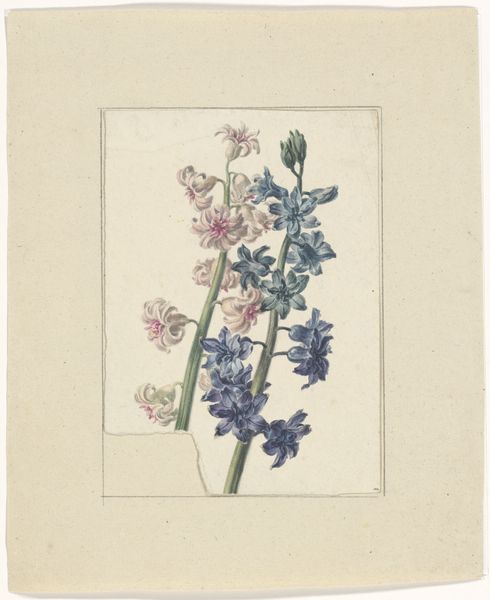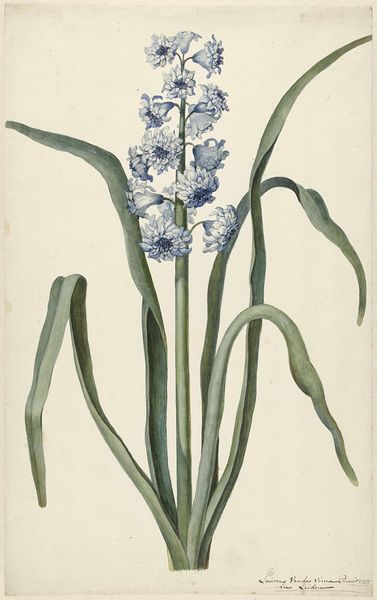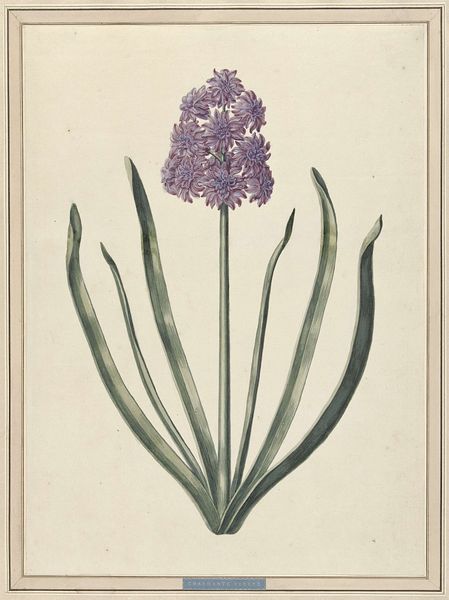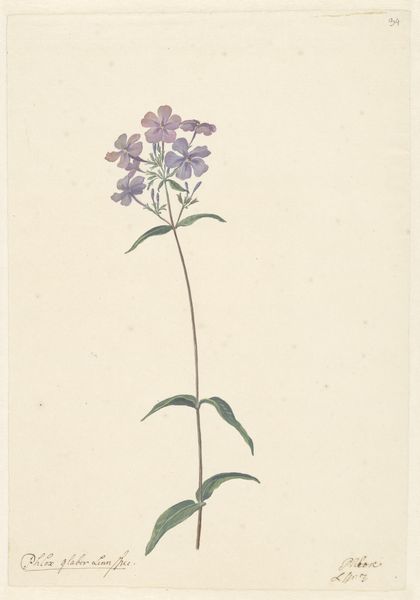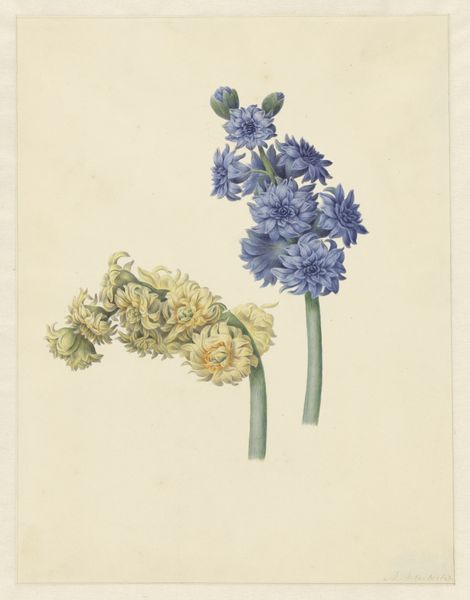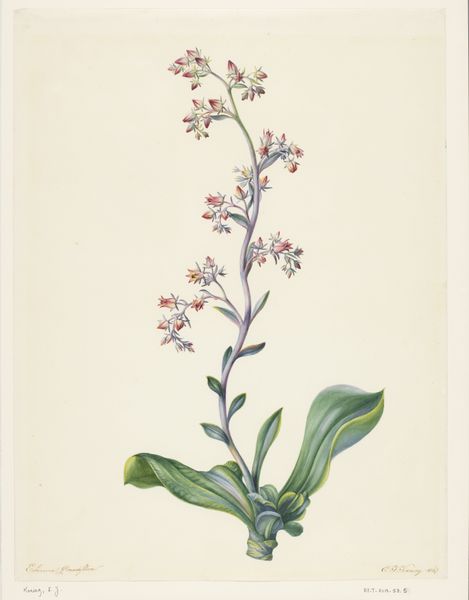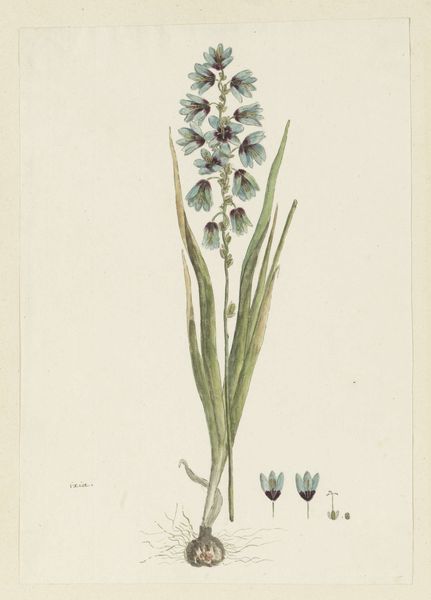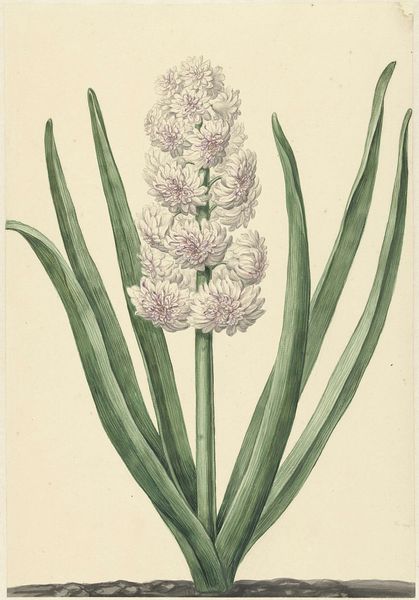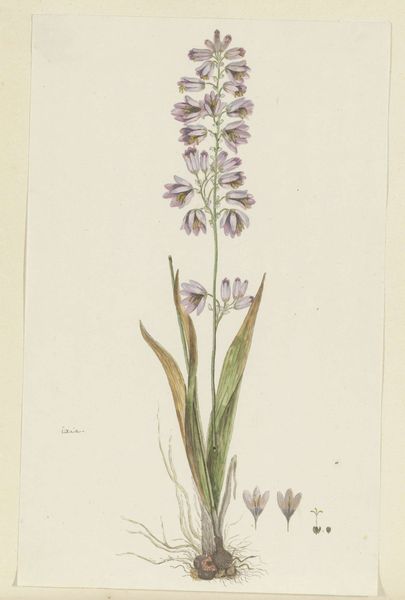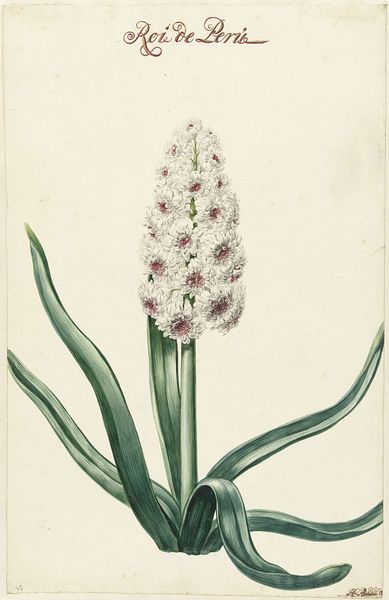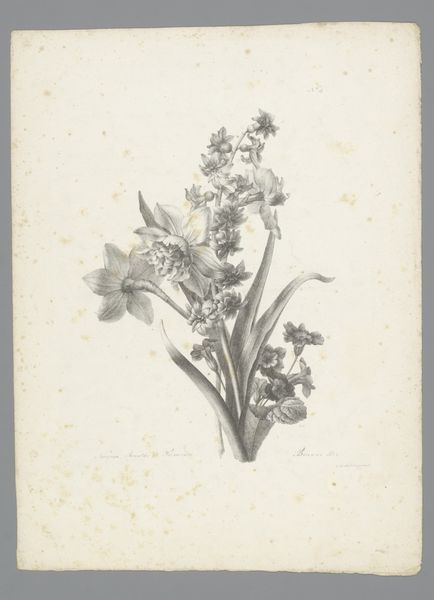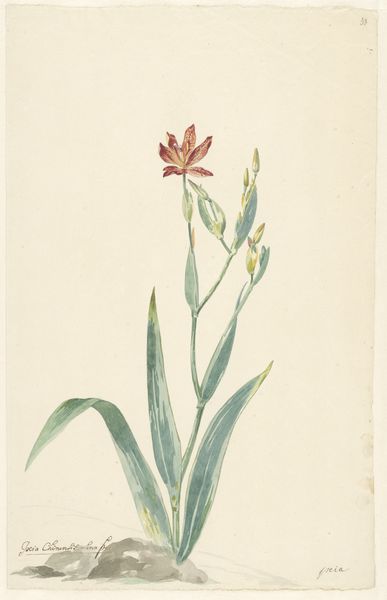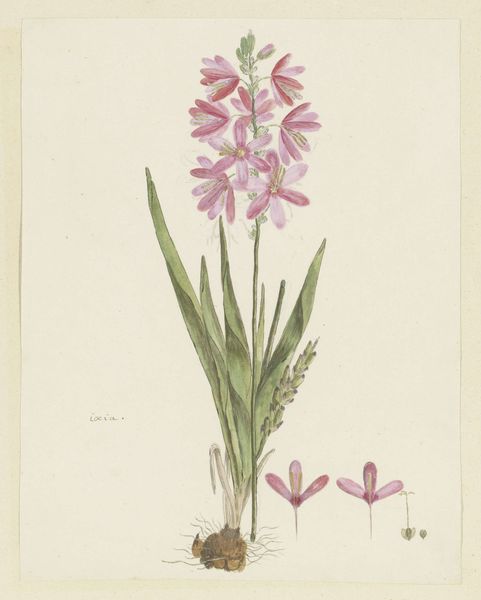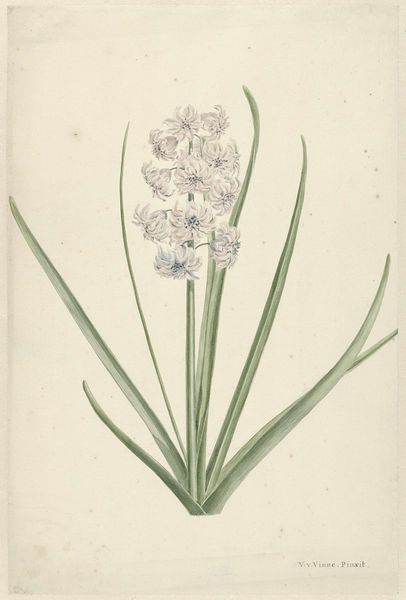
painting, watercolor
#
painting
#
watercolor
#
watercolour illustration
#
botanical art
#
realism
Dimensions: height 537 mm, width 375 mm
Copyright: Rijks Museum: Open Domain
Editor: Here we have a watercolor painting entitled 'Hyacint (zonder bol),' or Hyacinth (without bulb), created sometime between 1717 and 1771 by Nikolaus Friedrich Eisenberger. It's a delicate rendering, so precise, yet also serene. What catches your eye? Curator: This watercolor speaks volumes about the socio-cultural fascination with botany during that period. Consider the rise of scientific illustration as both a field of study and artistic practice. Were these images solely for scientific consumption, or did they circulate among a different public as symbols of status, knowledge, and refinement? Editor: That's a great point! It definitely feels…elevated, more than just a plant study. Almost like a portrait. How did the emerging museum culture of the time play into this trend? Curator: Exactly! Museums and botanical gardens were becoming important public institutions. Botanical art became another method to present natural specimens, controlled by the institution. How do you see that playing out in this particular image? Consider the isolation of the hyacinth on the page. Editor: The plain background certainly emphasizes the specimen. Perhaps the artist is trying to show its scientific accuracy as if under observation? It gives me the impression that these emerging institutions dictated the popular trends of the time. Curator: It does! Also think about the artist’s intentions; how might Eisenberger's position in the cultural landscape have shaped his representation of the hyacinth? Was he driven by personal fascination, or commissioned by someone seeking status through art? Editor: These botanical illustrations can really open up avenues into broader discussions about the cultural politics that underly art, which I hadn’t initially considered! Curator: Absolutely. It reveals how artistic choices – like the plant's placement or the level of detail – reflect these underlying societal forces. It’s much more than *just* a flower, right?
Comments
No comments
Be the first to comment and join the conversation on the ultimate creative platform.
